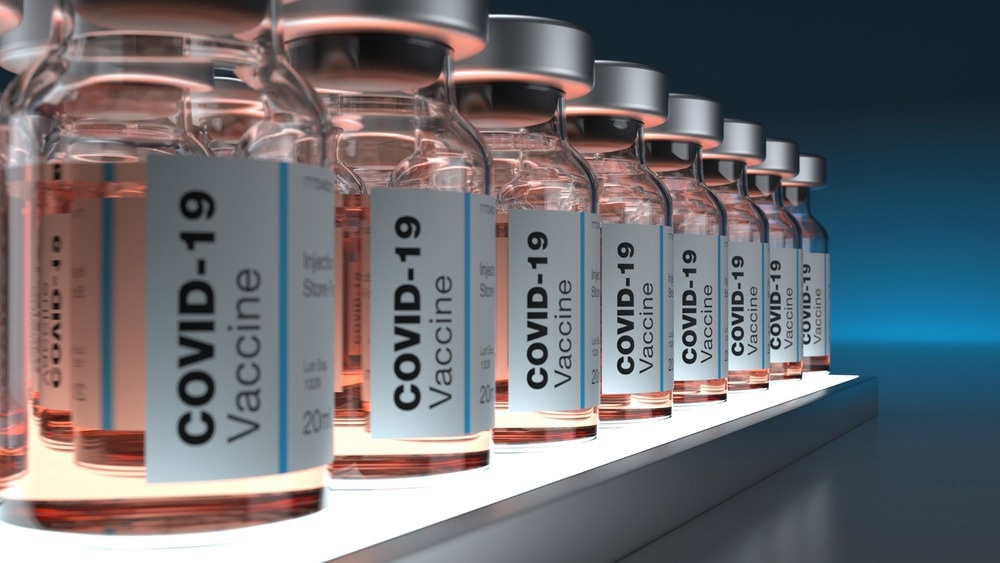In a recent review published in The New England Journal of Medicine, researchers summarized existing data on the immunogenicity of coronavirus disease 2019 (COVID-19) vaccines and the humoral and cellular immune responses against severe acute respiratory syndrome coronavirus 2 (SARS-CoV-2).
 Study: Covid-19 Vaccines — Immunity, Variants, Boosters. Image Credit: Dimitris Barletis/Shutterstock
Study: Covid-19 Vaccines — Immunity, Variants, Boosters. Image Credit: Dimitris Barletis/Shutterstock
Background
The unprecedented increase in COVID-19-associated morbidity and mortality has led to the swift development of SARS-CoV-2 vaccines across the globe. However, challenges regarding COVID-19 vaccinations include inequitable vaccination coverage, reluctance to vaccines, waning of immunity, and the emergence of SARS-CoV-2 variants of concern (VOCs) with increased immune-evasiveness.
The present review summarized the SARS-CoV-2 pandemic scenario based on existing data and the humoral and cell-mediated anti-SARS-CoV-2 immune responses.
Antiviral immunity
Immune responses are generated due to innate or adaptive immunity. Innate immunological responses form the initial line of antiviral defense. They are triggered rapidly on recognition of pathogen-associated molecular patterns (PAMPs) by cellular PRRs (pattern-recognition receptors) such as toll-like receptors (TLRs). Innate immunity involves cytokines such as type I IFNs (interferons) and cellular responses by macrophages and monocytes, neutrophils, natural killer (NK) cells, and dendritic cells.
Adaptive humoral and cell-mediated immune responses by antibodies (Abs) and lymphocytes, respectively, form the subsequent line of antiviral defense and involve SARS-CoV-2 epitope recognition. B lymphocytes produce Abs that bind to the SARS-CoV-2 spike (S) protein and either neutralize or eliminate SARS-CoV-2. The cluster of differentiation (CD)8+ T lymphocytes eliminate cells infected by SARS-CoV-2 whereasCD4+ T lymphocytes assist CD8+ T lymphocytes.
Neutralizing Abs (nAbs) essentially prevents COVID-19 acquisition, whereas the combination of cell-mediated and humoral immunological responses probably limits SARS-CoV-2 replication post-infection and prevents COVID-19 severity outcomes such as hospital admissions and deaths.
SARS-CoV-2 variants and vaccines
In spring 2020, SARS-CoV-2 acquired mutations rapidly, including the D614G mutation in the spike (S) protein which conferred an immune fitness advantage to the virus. Subsequently, multiple SARS-CoV-2 VOCs emerged with greater transmissibility and immune-evasiveness. In late 2020, the Alpha, Beta, and Gamma VOCs emerged, subsequently replaced across the globe by the Delta VOC and later by the highly transmissible Omicron VOC. Further, Omicron subvariants such as BA.1, BA.1.1, BA.2, BA.2.12.1, BA.4, and BA.5 emerged, and nAb responses against BA.5 were reported to be three-fold lower than those against BA.1 and BA.2.
Several SARS-CoV-2 vaccines (n=10) have received approval for worldwide use by the World Health Organization (WHO) and involve vaccine platforms such as (i) inactivated SARS-CoV-2 vaccines [Covilo (Sinopharm), CoronaVac (Sinovac), and Covaxin (Bharat Biotech)], (ii) messenger ribonucleic acid (mRNA) vaccines [mRNA-1273 (Moderna) and BNT162b2 (Pfizer–BioNTech)], (iii) adenovirus vector-based COVID-19 vaccines [Vaxzevria and ChAdOx1 (AstraZeneca) and Ad26.COV2.S (Johnson & Johnson–Janssen)], and (iv) adjuvanted protein vaccines [NVX-CoV2373 and Nuvaxovid (Novavax)].
Adenovirus vector-based vaccines have shown lower efficacy but higher stability than mRNA vaccines and have been extensively used among developing nations, although serious cases of vaccine-induced immune thrombotic thrombocytopenia (VITT) have been reported post Ad26. COV2.S vaccination in the United States (US).
VITT has also been reported in Europe with ChAdOx1 vaccination and in the US with mRNA-1273 vaccination. Complications such as pericarditis and myocarditis have been reported after mRNA-1273 and BNT162b2 vaccinations among young men, although most cases have been mild. Other regulatory bodies have authorized additional COVID-19 vaccines.
The mRNA-1273 and BNT162b2 vaccines induce high nAb responses and protective efficacy; however, the high initial serum nAb titers wane by three to six months and decline further by eight months. Contrastingly, Ad26.COV2.S induces lower initial nAb titers, but the nAb responses and clinical effectiveness are fairly durable for ≥8 months. At six to eight months, nAb responses are similar to BNT162b2, mRNA-1273, and Ad26.COV2.S vaccines.
The waning of immune responses post-mRNA vaccinations has been correlated with SARS-CoV-2 breakthrough infections among vaccinated individuals, and SARS-CoV-2 transmission has been reported even among fully vaccinated individuals. Hybrid immunity as a result of natural infections and vaccinations has induced more robust immune protection than infection or vaccination alone.
Cell-mediated immune responses have been induced by adenovirus vector-based COVID-19 vaccines and mRNA vaccines and are reported to be more durable than serological nAb titers. In immunocompromised persons, both nAb and T lymphocyte responses to COVID-19 vaccines are lower, and for such individuals, additional vaccine doses and prophylactic treatment with monoclonal Abs (mAbs) have been recommended.
Primary vaccination-induced nAb responses have shown limited cross-reactivity for Omicron, which increases post-booster COVID-19 vaccinations. However, the boosted titers wane within four months of the booster (third) mRNA vaccination and four weeks (or more for severe cases) of the fourth mRNA vaccination. Contrastingly, cell-mediated immune responses have remained largely intact.
Conclusion
Based on the findings, booster vaccinations are beneficial, but updated COVID-19 vaccines need to be developed for durable immune protection against the emerging SARS-CoV-2 VOCs, especially for immunosuppressed individuals. The goal of SARS-CoV-2 vaccinations must be the provision of long-term immune protection against COVID-19 severity outcomes. Hybrid immunity confers stronger immune protection than natural SARS-CoV-2 infections or vaccinations alone, and CD8 T lymphocytes contribute to immune protection when the nAb titers are subprotective.